-
 If You are Planning a Trip to Pondicherry in 2020, These are the Places to Visit for Foodies, Beach Bums and Shopaholics!
If You are Planning a Trip to Pondicherry in 2020, These are the Places to Visit for Foodies, Beach Bums and Shopaholics!
-
 Wondering Where to Go Shopping on Your Next Trip to Hyderabad? Visit Begum Bazaar – The City's Biggest Commercial Market and a Shopper's Paradise (2020)
Wondering Where to Go Shopping on Your Next Trip to Hyderabad? Visit Begum Bazaar – The City's Biggest Commercial Market and a Shopper's Paradise (2020)
-
 Here's What to Buy in Singapore and Why You Should Expect to Go on a Shopping Spree on This Island Nation!
Here's What to Buy in Singapore and Why You Should Expect to Go on a Shopping Spree on This Island Nation!
Why Goa is a Treat for Shopaholics?
Numerous Items to Buy
Goa’s usually considered the place for lazy lounging on the beach and not really for shopping. However, it’s quite the opposite. With a wide range of things to buy, offbeat flavours and vibrant colours on a variety of products at varying prices, Goa is actually a shopper’s paradise. Its amazing array of flea markets and night bazaars with buzzing vibe and exciting bargains make it an exciting place to explore. From luxurious shopping experiences to exploring shops with peculiar beachwear, to visiting bookstores with different fictional/mythological genres and government emporiums that trade in handicrafts & antiques, you can have some quality time shopping in Goa.
Goa’s clothing is highly recommended both in India and abroad, as they're made of authentic natural fabrics that are both lightweight and comfortable. You'll find a variety of traditional and contemporary fashion t-shirts, dresses, skirts and local saris at pocket-friendly prices, vibrant colours and patterns. For the tourists, traditional pashmina and cashmere products and lightweight carpets to shawls, blankets and decorative pillows from places as far as Kashmir can be found here.
Leather items like shoes, travel bags, handbags, jackets and gloves are equally appealing. The handcrafted, beautifully designed and extraordinarily coloured furniture is yet another popular item to shop for in Goa. Jewelry is one of the first things that top the list in ‘what to bring back from Goa’. Although the prices can be sky-high, they’re comparatively cheaper than Europe or Russia. The antique jewelry with a traditional touch offers a wide variety of befitting varying preferences.
No Dearth of Shopping Destinations
One of the most popular shopping places in North Goa is the flea market at Anjuna Beach that’s set every Wednesday and is apt for shopping fanatics. With over a hundred stalls offering stuff like hammocks, trinkets, handicrafts, tattoos, western jewelry, souvenirs, musical instruments, wooden crafts and home décor items, the market is best to explore excellent bargains on items of your interest.
Yet another awesome option is the Mapusa Market which is a wonderful locale for every exuberant shopper! Even though it is a normal market every day of the week, on a sunny Friday morning, the market transforms to give you the real flavour of Goan shopping. From items ranging from antiques, pottery to homemade pickles, fresh fish, Goa’s popular chouricos’ sausages, coir mats, clothing and more, Mapusa will give you a fun and satisfying shopping experience.
Calangute is one of the most visited beach spots in North Goa featuring its own market with an interesting line up of beach-side shacks and stalls selling trendy clothes, beachwear, leather items, handicrafts, souvenirs, sea shells, metal crafts and jewelry with a lot of snacks, seafood and beer.
The Mackie’s every Saturday, is a night bazaar that’s open until midnight at the dazzling Baga Beach, packed with a huge number of shops selling junk jewelry, antiques, clothes and more with an extensive variety of good and live music that will treat you to an enthralling experience.
Another must-see night bazaar is Ingo’s on Saturday at Arpora, which is a hot tourist spot with an exhilarating blend of shopping opportunities, ranging from delicious food items to herbs, spices, accessories, handicrafts, designer jewelry, semi-precious gems and paintings.
Some Handy Shopping Tips
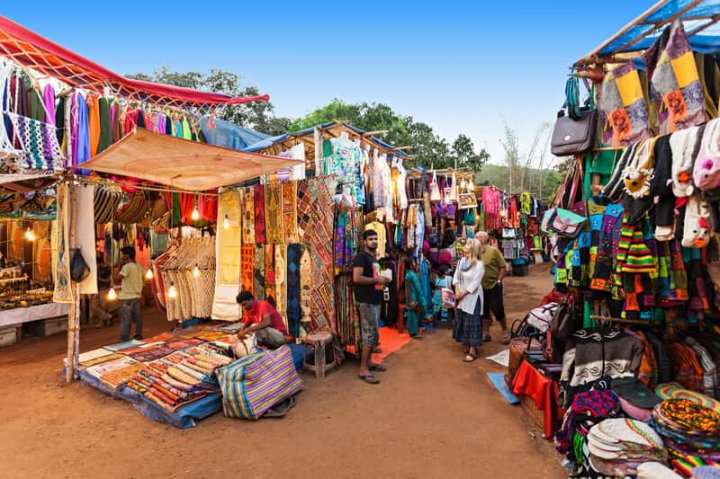
Shopping in Goa transformed literally for visitors with the introduction of flea markets in the remote parts of the state, where gypsies and hippies would sell their wares at exorbitant rates in comparison to the prevalent prices. Despite this, the tourists continued buying as the currency conversion to INR anyway benefited them. Gradually shopping became a fashion to sale and purchasing from these markets attracted more locals to trade, which got the pricing down to some extent. When shopping in Goa, it is important that you lead by bargaining to your heart’s content, beginning as high as 60% off the offered price, as most of the goods are unbranded and don’t really have price tags. Next, check the quality and genuineness of the product as once bought, there may be no scope to return it. This is more likely at open outlets selling jewelry. There have been situations where silver jewelry wasn’t silver at all! Even items like leather shoes or jackets are rarely made of leather. So be aware before you pay exorbitantly for your purchase. Cotton apparel from Indian vendors are far more genuine than the ones the foreign vendors sell.
Explore the Indian spices and tea with utmost conviction as their authenticity is a given, as most of these spices are local makes and tea is purchased from Assam and is of good quality. Handicraft items from licensed Goa Emporiums will be pocket-friendly and genuine viz-a-viz stuff you buy from open outlets. You can also compare prices before you buy anything. The Mapusa Market’s the only market in Goa where you can buy almost everything under one roof. You will find farm fresh veggies here priced reasonably in comparison to the departmental stores at the beach belt. The Nepalese market in Mapusa is good for buying snooker shoes, leather jackets and other imported items at reasonable rates, albeit quality may not really be top notch. It is best to adhere to recommendations when shopping, however also be wise to check other available options.
Avoid moving around in cabs for your shopping escapades, as most cabbies have tie-ups with vendors and hence your chances of getting a lucrative deal may be dull. There are tour operators and resorts also that have commission links with shopping malls. So it would be in your best interest to follow your instincts on specific buys and to haggle on the price as you deem necessary. As far as possible, avoid shopping on the beach belts, as the vendors hike up their prices in lieu of their rentals on the shops and it’s also a good idea to sieve through the local newspapers to locate clearance or discount sales, exhibitions and more for a good shopping experience.
Top Things to Buy in Goa
Cashew Nuts
Anacardium Occidentale, the cashew tree has had a long-standing past as an exceptionally useful tree, the edible worth of which was discovered by Goan prisoners during the freedom movement in 1752. Albeit native to Brazil, cashew was originally planted by the Portuguese to stop the erosion of the topsoil resulting from the monsoons in Goa. The soil in Goa was found to be ideal for cashew plantation and led to India being one of the largest cashew producers in the world. As the Goan prisoners tried the cashews and started using them as a regular food item, cashew nuts became a part of Goan Cuisine.
The best quality of cashews is found at Zantye’s, with a combination of unique taste and flavours. Vacuum packed and Nitrogen flushed to retain the freshness, these cashew nuts are delicious, crisp and nutritious available in different flavours like salted cashews, pepper cashews, Indian spicy cashews, cheese cashews and more. You can also explore Panaji’s Royal Kajuwala, Ajanta Industries in Ponda and Saima Agro-Industry in Usgao.
Goan Spices
Given its history of being a Portuguese colony for 4 decades and being ruled by different communities has led to an obvious and diverse Goan cuisine. Besides being influenced by the three Indian communities of Hindus, Muslims & Christians, Goan cuisine has also been affected by the Portuguese, Brazilian, African, Arabic, French, Malaysian, Konkan, Malabar & Chinese. This also led to a change in the food and lifestyle of local Indians with the introduction of new dishes. Goan cuisine is amazingly rich and delicious and each dish in the cuisine has four important elements: salt, sweetness, sourness and spice and along with the usual local spices, rice, coconut milk & fish are the basic essential ingredients in Goan cuisine. Some of the typical spices in Goan cuisine include Kokum, tamarind, cashews and red Goan spices.
Even though you can buy spices from anywhere in Goa, but one of the best places in North Goa’s Mapusa with its renowned Friday market and Masalkar, a specific shop to explore and bargain for Goan Spices. There are spice farms as well with a variety of aromatic spices that include cardamom, black pepper, cinnamon, and cloves. Panaji is also yet another ‘go-to’ place for Goan spices.
Feni
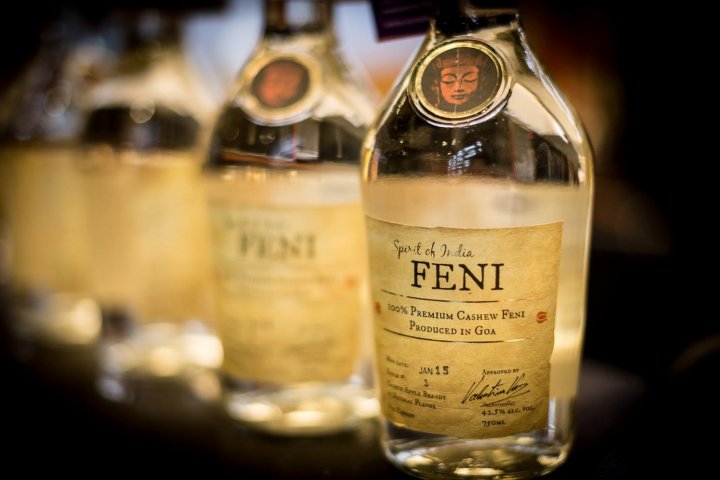
‘Feni’, is a Sanskrit word which implies ‘froth’ owing to the bubbles that are formed when liquor is poured or shaken. An alcoholic drink that’s made from cashews or coconut, Feni is Goa’s drink, popular among locals and tourists alike. Albeit not produced commercially, Feni is handmade and absolutely natural with nearly 4,000 distillers in Goa engaged in Feni production, 70% of which is used for home consumption and rest available for sale in the market.
Feni is originally believed to have been made at Satari, a heavily forested area in North Goa, where villagers made the drink from coconuts. It has been around for over 400 years and is known as yet another legacy left behind by the Portuguese. With two distinct types, cashew and coconut, the concentration of a small batch of Feni has an essential effect on its final character that retains some of the delicate aromas, flavours and congeners of the juice from which the Feni is produced. In fact, a carefully manufactured Feni’s marked by its aroma. Since Feni is classified as a country liquor, it isn’t available commercially outside Goa. You can purchase Feni at www.goaliquorbazaar.com or go to a licensed seller to avoid getting conned by fake concoctions of Feni.
Goan Handicrafts
Once known for its jewelry, Goa is now popular for its handicrafts. With a wide range of handiworks crafted by over a 100 artisans, their wares are displayed for sale in many places by Goa Handicrafts, Rural & Small Scale Industries Development Corporation.
Some of the most popular handicrafts in Goa include brass that is molded in various shapes and designs ranging from hanging lanterns, statues, candle stands, the well-known Lamp Samai (a tree-like oil lamp with flower motifs) and ashtrays; Paper Machine is a waste art paper that’s used to create colourful items for daily use ranging from jewelry boxes to pen stands to flower vases and wall hangings.
Bamboo and crane craft is one of the oldest arts practiced in Goa, introduced by the Mahar community artisans and include lightweight furniture, letter holders, baskets and flower pots; Terracotta Pottery continues leading character to Goan homes with their artistic finishing with distinct art forms evident in decorative floral pots, figurines and more. Some other Goan handicrafts include crochet, jute macaram and embroidery items. The best places to buy Goan handicrafts include the Panjim market, Anjuna flea market, Tibetan market, Margoa market and Ingo’s bazar.
Wooden Crafts
Goan handicrafts make for colourful souvenirs and you will find peeking out at you from behind the shop windows and in the noisy streets of the flea markets. Ranging from colourful wooden lacquerware to intricate wood carvings, Goa’s wooden crafts are varied and vibrant. Some of the most exquisite woodcraft items created in Goa include corner stands, baby carts and cradles, used mostly by Hindu communities on religious occasions and in daily use as well. The ancient art of Wood Turning is a labour intensive craft in which a rough piece of wood is crafted into different forms that include anything from a bedpost to a wooden bowl! Each wooden item is handmade and specialized, hence no two pieces are identical, each reflecting the wood’s natural imperfections and the artisan’s craftsmanship.
A common sight in Goa is the presence of small shops resident in Old Goan mansions, restored & offering various articles for household use. Sangolda is a restored mansion in Arpora with antique furniture and curios arranged in a manner that you can walk through and examine them properly before buying them. Look out for rose and sandalwood products sold in souvenir shops and markets that not only decorate the house but also lend a pleasant fragrance to it. The Chaku Crafts Emporium on Lovers beach road, Betalbatim-Salcatte is known for its walnut wood carved furniture and souvenirs with a lovely ensemble of wood-crafted products.
Goan Music
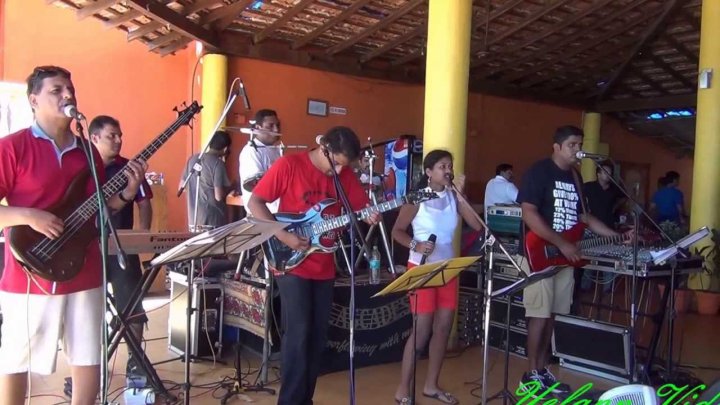
Spanning decades, local Goan music has blended with European Music, primarily that of Portugal and hence local music has a prominent presence of western styles, instruments and notes in comparison to its regional Asian variants. Goan Music covers a wide range of music genres prevalent in Goa, right from Western music to Indian Classical, with Konkani music the most popular across the state. Being a former Portuguese region, Goa’s musical domain sees evident use of violin, trumpet, piano, drums and guitar, and a number of renowned musicians and singers that have put Goa in a significant bracket of Indian Music Maestros. The local bands in Goa are also renowned for their use of western music both at public and private celebrations, as is the presence of Electronic & Trance music, mostly at the music festivals hosted annually in Goa attracting visitors from nearly 50 nations.
Another significant attraction of the Goan Music industry is the Tiatr, a musical theatre very popular among the Goans, the Expats, London, other major western cities as well as residential communities in the Middle East. The dramas performances in Roman Konkani dialect include music, dances and songs that are integral to the play and known as Kants. Other songs are typically based on political/controversial/topical issues or comedy. With an amalgamation of different cultures and people, Goa’s music has been clouded with different styles for centuries and is riding rich on its electronic musical past and party lifestyle. Even though Goa isn’t too heavy on its records or music establishments, there are some places where you may find second-hand records, and music literature like the Mapusa market or the Golden Heart Emporium at Abade Faria Rd.
Then, there are the annual music festivals that Goa is so popular for. For instance, Sunburn is a regular annual event that combines entertainment, music, food and shopping spanning 3 days in late December and traction of nearly 22,000 people and counting each year.
Painted Tiles
Azulejos, also spelt as Azulejo is the tongue-twisting name for colourful tiles you’d see at most places in Goa, especially in old buildings. Each tile in these buildings is hand painted and glazed. These tiles aren’t just regular tiles painted in blue and white, but you will see the square tiles with beautiful images and family portraits crafted on them as well. The history of these painted tiles implies that the Portuguese brought them to Goa, however without the skills to make them locally. So the Azulejos were handcrafted originally in Portugal and then shipped to Goa for installation. This was true through the Portuguese reign. Later, a few men and students from the Goan College of Arts visited Portugal to study this particular art form and brought back the skills needed to do it all in Goa.
The raw base for these Azulejos tiles is the tile itself, square ceramics measuring 15X15cm, sourced from India, China and Portugal. The designs on the tiles is either hand sketched or pasted using a sticker or screen prints. Customized tiles and murals are entirely hand painted. You will see some of the best Azulejos tiles at the Menezes Braganza Hall in Panaji, Chinchinim and the Wedding Hall at St.Estaban. You can buy them at Azulejos De Goa-Panaji, Mario Miranda Galleries - Panaji, Porvorim, Margao, Calangute, Carmona or Turi Azulejos in Bicholim.
Kunbi Sari
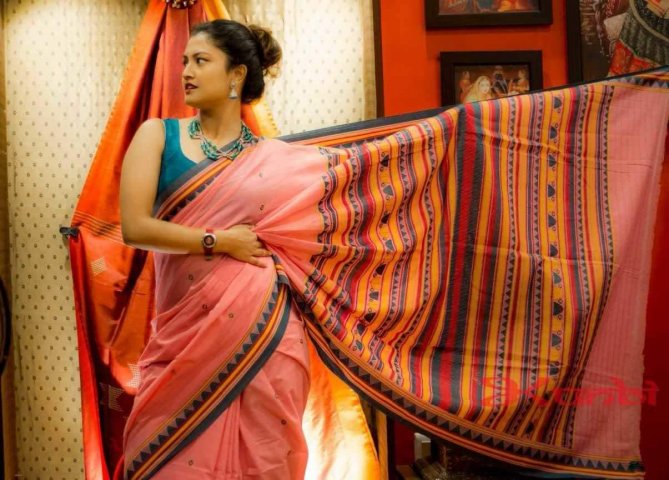
During the reign of the Portuguese, Goa was the hub for handloom weaves and most artisans had flourishing workshop that produced Kunbi Saris. The Kunbi tribe is known to be one of the oldest tribes in Goa and were considered quite industrious. When Goa became a part of the Indian power looms, and handlooms were sold for firewood, the weavers had to opt out for alternate occupations. During the famous Kunbi Dance, the local women dancers swooned to the beats wearing vibrantly colored Kunbi Saris, which had a simple drape, with the sari’s length just below the knee, allowing the women easy movement to carry on with their daily chores and physically draining field work. Even though the sari isn’t available in market easily now, the tribal women still adore this sari drape, wearing it in the same way using other cotton or synthetic saris.
With its roots set in tradition, the Kunbi saree is weaved simple with checks, usually in red and white. Today, Goa’s native sari is considered a prized collector’s item in the realm of handlooms. In the past decade, the renowned fashion designer from Goa, Wendell Rodricks has revived the Kunbi Sari and given it a contemporary touch, while keeping the essence of the tribal tradition alive. The revived version of Kunbi has an ethnic geometric pattern with minimalist graphics against a white field fabric. You can buy the traditional Kunbi Sari from Kai Thari, an online handloom platform for Goan Handlooms or shop.Gaatha.com. You can also explore the designer version of Kunbi Saris at the Wendell Rodricks Design Space in Goa in the price range of Rs.6,500-7,500.
Sea Shell Crafts
The external skeletons the Mollusks, a class of marine animals – Seashells are usually made of calcium, which is obtained when the Mollusk dies. Shells are usually collected to be displayed for art purposes or for their beauty, and their crafts are some of the most unique ways to use these natural treasures and add their charm to interior decorations or accent wall décor.
Goa, being one of India’s most popular destinations is not only loved for its white sandy beaches, sparkling water but also popular for its fascinating souvenirs. Artists display their talent on these simple looking seashells and transform them into extraordinary pieces of art. Shells in various shapes, sizes and shades are used to craft jewelry, décor and utility items like lampshades, chandeliers, furniture, wall shelves, mosaic tiles, coasters, table mats, clocks, mirror frames and more! You will find most seashell crafts being sold in carts on the beach outskirts or along with the tourist spots in Panjim.
Coconut Crafts

Yet another popular souvenir from the beaches of Goa are the beautiful and decorative items made of coconut fibre. From brooms that are made really well to serve a good life span, to boats and outriggers to coconut jewelry along with other fashion accessories like bags, masks, purses, candle stands and more, there’s a lot of physical labour and skilled art involved in the making of coconut crafts.
The Coconut art is available for display and purchase in a variety of shapes with the most popular ones being trendy coconut shells, coir bottles, storage pouches and ashtrays. Given the hard work, skills and time involved, these coconut crafts are slightly expensive in the realm of collectibles but worth every penny!
Bonus Tip: Some More Interesting Goan Delights
Besides the popular choices of what you can get back from Goa, there are few other Goan treasures you can’t afford to miss buying.
- Beachwear: Given the holiday fervor when you arrive in Goa, it is only natural that you can choose the best beachwear here, right from bikinis to sarongs, to shorts, hats or groovy flip flops.
- Hats: There’s a lot of sun in Goa, so buy a hat to cover your head. Choose from a variety of typical Goan hats that include a big hat for women and a smaller hat for the men in varying combinations of pastel shades with colorful ribbons for the women and shades of beige or brown with black outlines for the men, with a few palm leaf hats for the experimental tourists.
- Kokum: Kokum is a typical Goan fruit that’s used mostly as a sourcing agent in the food, mild and lovely pink in color, you’ll find fresh Kokum in plenty during summers in Goa. Some of the popular variants for the Kokum fruits you can buy include the Kokum Sherbet, Kokum Juice or Kokam Curry.
- Bebinca: Bebinca is a ready to eat dessert made of flour, eggs, sugar and coconut milk, baked layer by layer. With a short shelf life, this souvenir is packaged well and is easy to carry back home, available in most bakeries and supermarkets.
- Other Interesting Choices: Some other interesting souvenirs include Dodol, a popular dessert made of coconut and jaggery, Fruit Wines, Sea Salt, Coconut Vinegar, Goan Bread, Flavored Tea, and Pop Art.
-
 If You are Planning a Trip to Pondicherry in 2020, These are the Places to Visit for Foodies, Beach Bums and Shopaholics!
If You are Planning a Trip to Pondicherry in 2020, These are the Places to Visit for Foodies, Beach Bums and Shopaholics!
-
 Wondering Where to Go Shopping on Your Next Trip to Hyderabad? Visit Begum Bazaar – The City's Biggest Commercial Market and a Shopper's Paradise (2020)
Wondering Where to Go Shopping on Your Next Trip to Hyderabad? Visit Begum Bazaar – The City's Biggest Commercial Market and a Shopper's Paradise (2020)
-
 Here's What to Buy in Singapore and Why You Should Expect to Go on a Shopping Spree on This Island Nation!
Here's What to Buy in Singapore and Why You Should Expect to Go on a Shopping Spree on This Island Nation!
-
 Confused About What to Buy from Dubai? Here is a Complete Shopping Guide to Help You Out (2019)
Confused About What to Buy from Dubai? Here is a Complete Shopping Guide to Help You Out (2019)
-
 Add More Excitement to Your Trip to India's Silicon Valley by Visiting these Top 10 Malls in Bangalore in 2019
Add More Excitement to Your Trip to India's Silicon Valley by Visiting these Top 10 Malls in Bangalore in 2019
Have a Wonderful Shopping Experience in Goa and Bring Back these Amazing Additions for Your Home
Goa is famous for many things. Now you know what all amazing Goan things you can bring back. You can never shop enough in Goa and we suggest you make a list before embarking on your shopping trip.

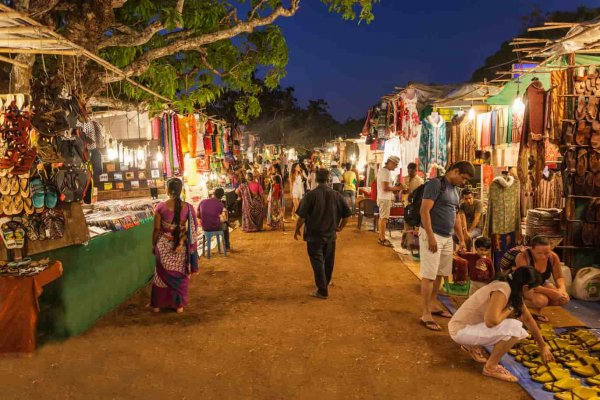




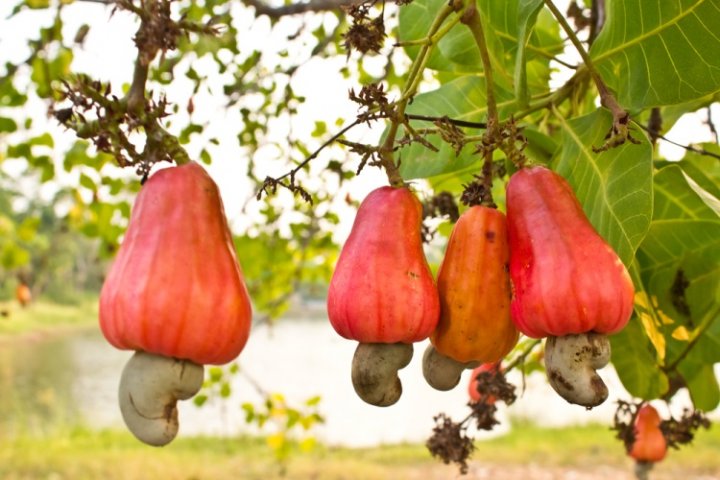

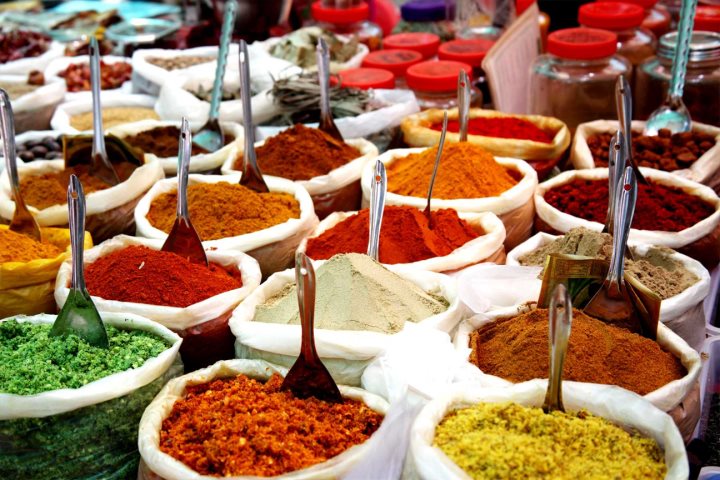

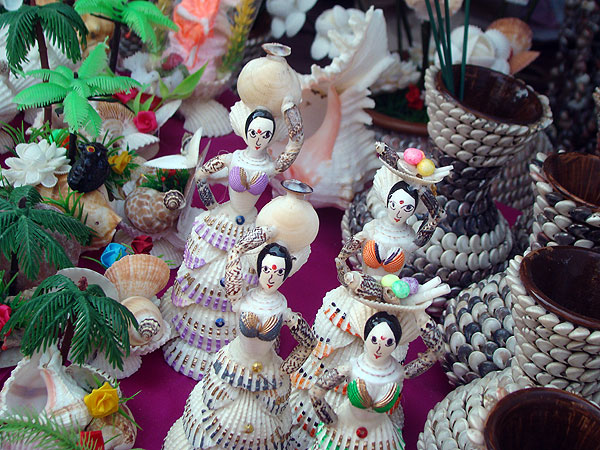

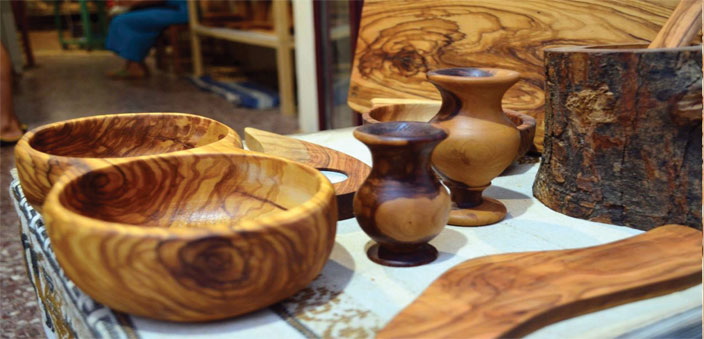

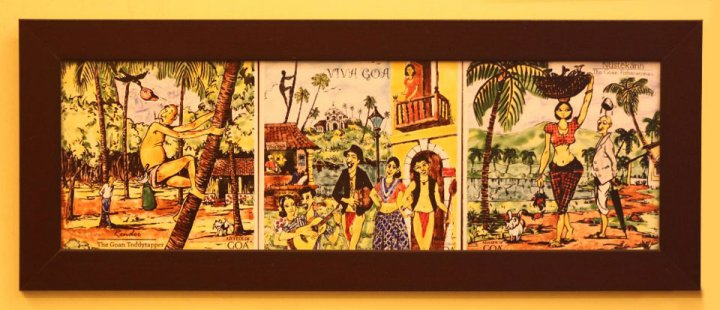
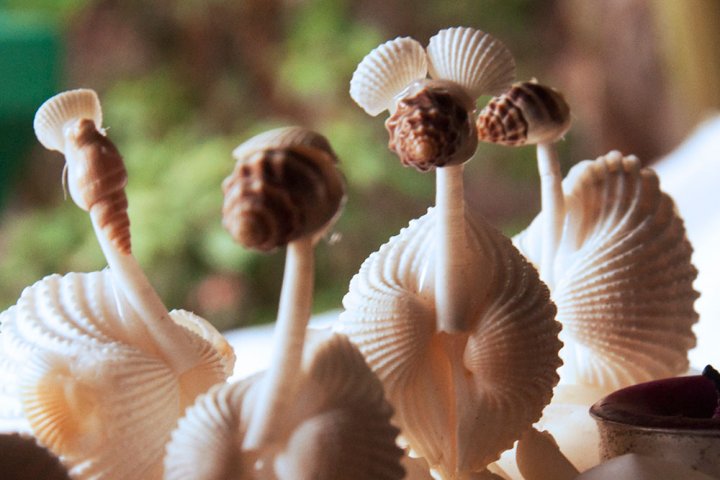


 Highlight the Best Facets of Your Incomparable Beauty: Discover the Best Face Highlighter Currently Available in India and Everything You Need to Know About Using Face Highlighters for Maximum Effect (2023)
Highlight the Best Facets of Your Incomparable Beauty: Discover the Best Face Highlighter Currently Available in India and Everything You Need to Know About Using Face Highlighters for Maximum Effect (2023)
 Forget the Blemishes and Get that Picture Perfect Flawless Radiance on Your Face: Check out the Best Foundations for Oily Skin Currently Available in India and Everything You Need to Know About Makeup Foundations (2023)
Forget the Blemishes and Get that Picture Perfect Flawless Radiance on Your Face: Check out the Best Foundations for Oily Skin Currently Available in India and Everything You Need to Know About Makeup Foundations (2023)
 Make Your Presence Felt Wherever You Go: Discover the Best Perfumes Under 2000 for Both Men and Women to Announce Your Arrival and Make Any Occasion Memorable (2023)
Make Your Presence Felt Wherever You Go: Discover the Best Perfumes Under 2000 for Both Men and Women to Announce Your Arrival and Make Any Occasion Memorable (2023)
 Protect Your Oily Skin from the Harmful Rays of the Sun: Discover the Best Gel Based Sunscreens for Oily Skin and Everything You Need to Know Before Buying One (2023)
Protect Your Oily Skin from the Harmful Rays of the Sun: Discover the Best Gel Based Sunscreens for Oily Skin and Everything You Need to Know Before Buying One (2023)
 Minor Blemishes and Wrinkles Affecting Your Confidence? Check out the Best BB Creams to Conceal Your Worries and Nourish Your Skin to Restore the Healthy, Radiant and Glowing Complexion Back Again (2023)
Minor Blemishes and Wrinkles Affecting Your Confidence? Check out the Best BB Creams to Conceal Your Worries and Nourish Your Skin to Restore the Healthy, Radiant and Glowing Complexion Back Again (2023)
